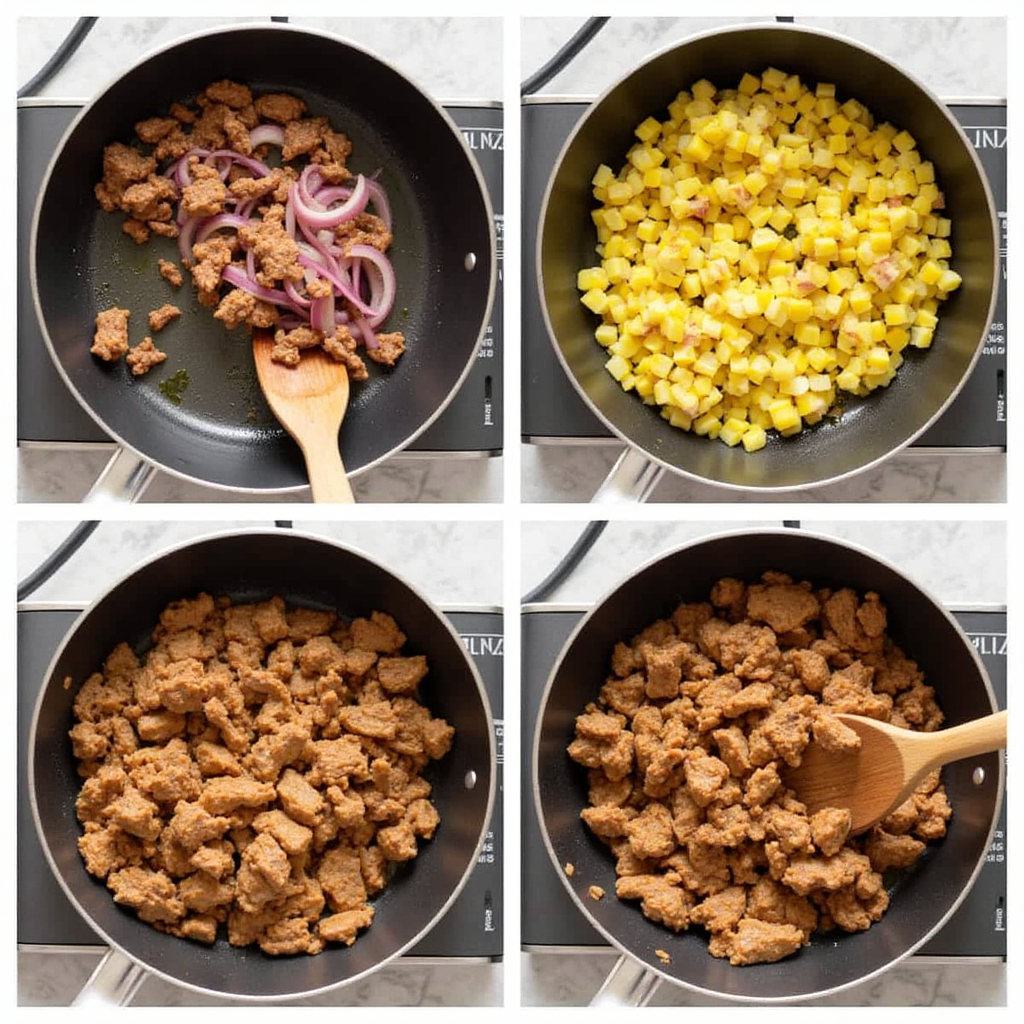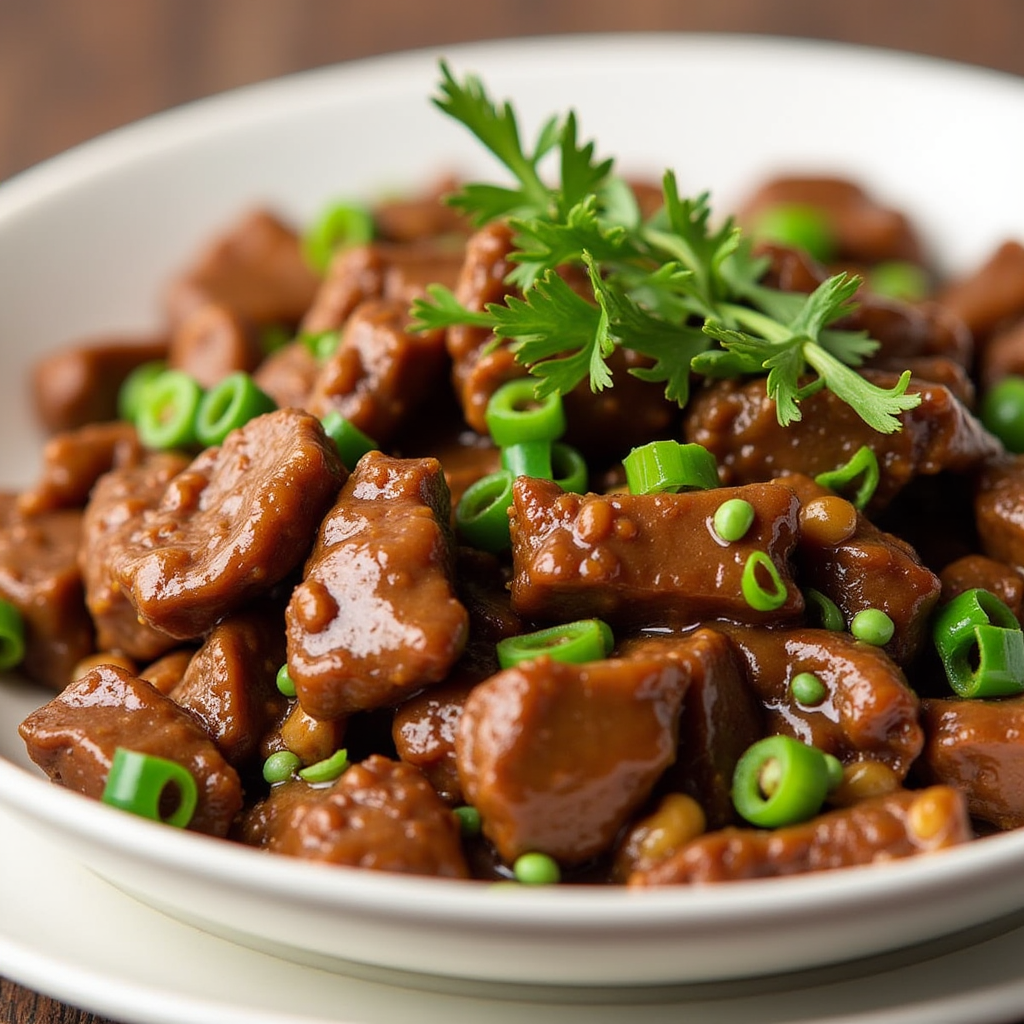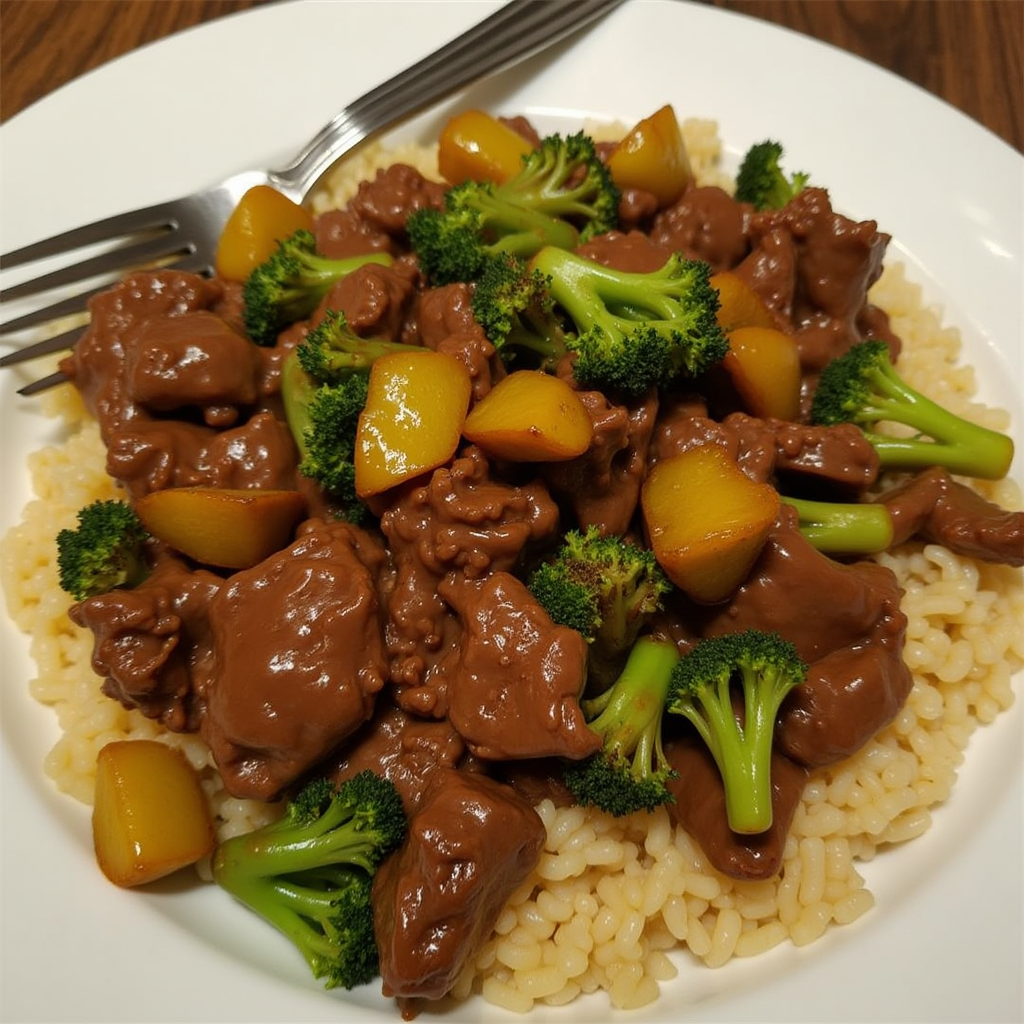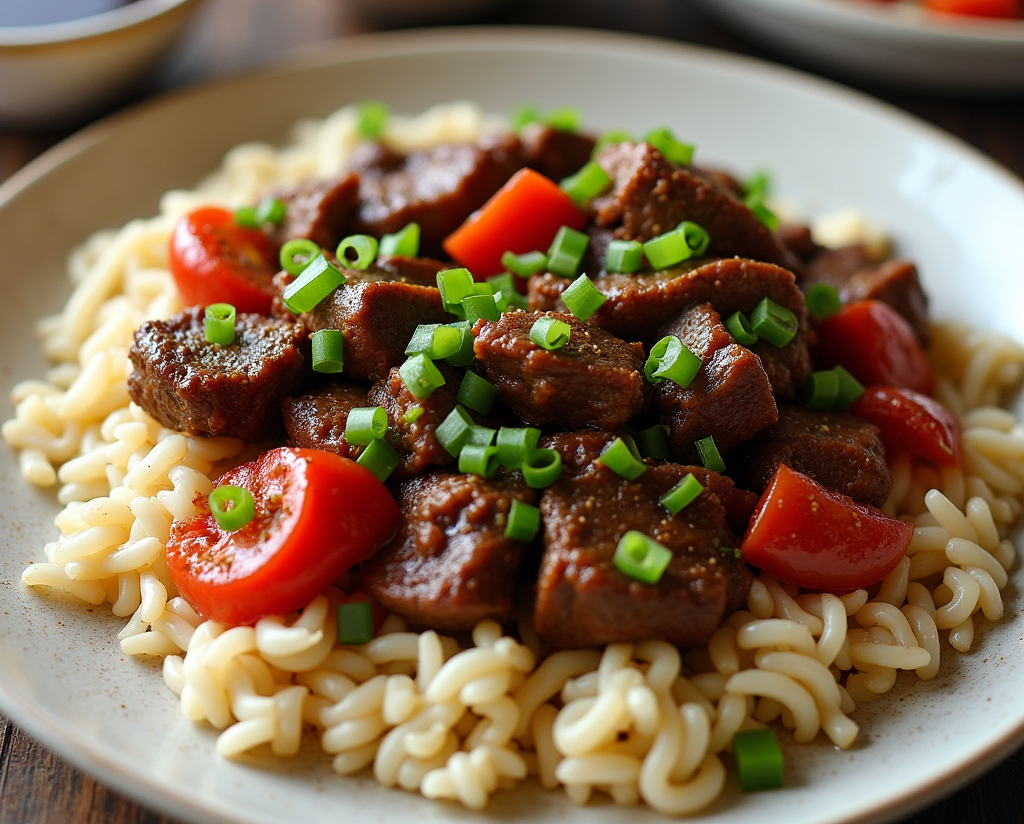Few dishes match the bold flavors and satisfying textures of restaurant-style Mongolian beef. This dish, known for its tender meat, rich sauce, and well-balanced flavors, is a favorite in Chinese-American cuisine. Preparing it at home allows control over ingredients while maintaining the dish’s authenticity.
Unlike many stir-fried dishes, restaurant-style Mongolian beef relies on careful preparation and technique to achieve its signature taste. From selecting the best cut of beef to crafting a velvety sauce, every step contributes to a dish that rivals those from top-tier restaurants.
This guide will detail everything necessary to make restaurant-style Mongolian beef at home. By following precise ingredient choices, cooking techniques, and balance of flavors, anyone can recreate this takeout favorite with confidence. Let’s dive into its origins before moving on to the essential components of the dish.
The Origins of Mongolian Beef
Despite its name, restaurant-style Mongolian beef does not originate from Mongolia. Instead, it traces its roots to Taiwan, where Chinese chefs adapted traditional stir-fry techniques to create bold and flavorful dishes suited to local tastes.
The dish gained popularity due to its combination of thinly sliced beef, a rich sauce, and aromatic seasonings. Unlike many Chinese dishes that emphasize complex spice blends, restaurant-style Mongolian beef focuses on a perfect balance of sweetness and umami, allowing the beef to remain the star ingredient.
When Mongolian beef reached Western countries, it quickly became a staple in Chinese-American restaurants. The dish evolved to include crispy beef, thicker sauces, and additional vegetables to enhance both flavor and presentation. Although variations exist, the core elements remain the same—tender beef, a glossy sauce, and a well-executed stir-fry technique.
Essential Ingredients for Restaurant-Style Mongolian Beef

Crafting an authentic restaurant-style Mongolian beef dish starts with selecting high-quality ingredients. Each component plays a crucial role in achieving the desired taste and texture.
Key ingredients include:
- Beef – Thinly sliced cuts, such as flank or sirloin, ensure tenderness.
- Soy Sauce – A combination of light and dark soy sauce provides depth.
- Brown Sugar – Adds caramelization and balances the umami flavors.
- Garlic and Ginger – Essential for aromatic complexity.
- Cornstarch – Helps achieve a crispy texture when frying the beef.
- Green Onions – Provide freshness and a mild onion flavor.
- Sesame Oil – Enhances the dish with a rich, nutty aroma.
Using these ingredients in precise proportions ensures that restaurant-style Mongolian beef maintains its bold, savory-sweet character. Now, let’s discuss how to choose the best cut of beef for maximum tenderness.
Choosing the Best Cut of Beef for Tender Results
The success of restaurant-style Mongolian beef largely depends on selecting the right cut of meat. The ideal beef should be tender, well-marbled, and quick-cooking.
Best Cuts for Mongolian Beef
- Flank Steak – A classic choice with a balance of tenderness and texture.
- Sirloin – Slightly leaner but still flavorful when sliced thinly.
- Ribeye – Offers exceptional marbling and tenderness.
- Top Round – A budget-friendly alternative that requires careful slicing.
Regardless of the cut, slicing the beef correctly is crucial. Cutting against the grain ensures the fibers are shortened, leading to a more tender bite. Additionally, partially freezing the beef for 15-20 minutes makes it easier to achieve uniform, thin slices.
With the right beef selection in place, it’s time to focus on the marinade that infuses the dish with deep, savory flavors.
The Perfect Marinade for Authentic Flavor
A well-balanced marinade is key to achieving the signature taste of restaurant-style Mongolian beef. Unlike heavily seasoned marinades, this dish benefits from a simple yet effective blend of ingredients that enhance the natural flavors of the beef.
Key Components of the Marinade
- Soy Sauce – Forms the umami-rich base of the marinade.
- Shaoxing Wine – Adds depth and a touch of complexity.
- Garlic and Ginger – Bring warmth and aromatics.
- Cornstarch – Creates a light coating that locks in moisture.
Letting the beef marinate for at least 30 minutes allows the flavors to penetrate while ensuring a tender texture. While the marinade works its magic, preparing for the cooking process is essential to achieving the perfect sear.
Cooking Techniques: Achieving the Perfect Sear
High heat and quick cooking are fundamental to restaurant-style Mongolian beef. The goal is to sear the beef while maintaining its juiciness, creating a restaurant-quality texture.
Steps for the Perfect Sear
- Use a Wok or Cast-Iron Skillet – These retain heat efficiently for even cooking.
- Preheat to High Temperature – Ensures quick searing without overcooking.
- Cook in Small Batches – Prevents steaming and ensures crispiness.
- Avoid Overcrowding – Gives each piece direct contact with the hot surface.
Once the beef is perfectly seared, the next step involves creating the signature velvety texture using cornstarch.
The Role of Cornstarch in Creating a Velvety Texture
Cornstarch plays a critical role in both the marinade and the cooking process of restaurant-style Mongolian beef. It provides multiple benefits, ensuring the final dish has the right consistency.
Why Cornstarch Matters
- Tenderizes the Meat – Forms a protective layer, keeping the beef moist.
- Aids in Searing – Promotes a golden-brown crust without excessive oil absorption.
- Thickens the Sauce – Helps create a glossy, restaurant-style finish.
A light dusting of cornstarch before frying ensures that the beef develops a crisp exterior while remaining juicy inside. With this step perfected, it’s time to craft the signature sauce that makes restaurant-style Mongolian beef unforgettable.
Crafting the Signature Sauce: Balancing Sweet and Savory
The sauce in restaurant-style Mongolian beef is the heart of the dish, providing a perfect harmony between sweet and savory flavors.
Essential Ingredients for the Sauce
- Dark Soy Sauce – Adds richness and depth.
- Brown Sugar – Creates a caramelized sweetness.
- Oyster Sauce – Introduces a layer of umami.
- Sesame Oil – Brings a toasty, nutty aroma.
- Garlic and Ginger – Enhance the complexity of the sauce.
Simmering the sauce until it thickens ensures it clings to the beef, delivering intense flavor in every bite. Finally, let’s explore the vegetables that best complement restaurant-style Mongolian beef.
Vegetables That Complement Mongolian Beef
Although restaurant-style Mongolian beef primarily highlights beef, incorporating vegetables enhances its texture and flavor profile.
Best Vegetables to Include
- Green Onions – Traditional and aromatic.
- Bell Peppers – Add sweetness and color.
- Broccoli – Provides a crisp, fresh contrast.
- Carrots – Introduce a slight crunch and mild sweetness.
Stir-frying vegetables briefly in high heat ensures they retain their vibrant color and texture. Adding them at the right moment prevents overcooking while maintaining their natural flavors.
Mastering Restaurant-Style Mongolian Beef: Serving, Storage, and Expert Tips

Serving Suggestions: The Best Sides to Pair With Mongolian Beef
A well-chosen side dish enhances the flavors of restaurant-style Mongolian beef while creating a balanced meal. Since the dish features bold, savory-sweet flavors, the best accompaniments offer contrast or complement its richness.
Ideal Side Dishes
- Steamed Jasmine Rice – A classic choice that absorbs the sauce beautifully.
- Garlic Fried Rice – Adds depth with a fragrant garlic-infused profile.
- Chow Mein or Lo Mein – Stir-fried noodles offer a satisfying texture.
- Stir-Fried Vegetables – Bell peppers, snow peas, or bok choy bring freshness.
- Steamed Dumplings – Serve as a flavorful appetizer alongside the main dish.
For a lighter pairing, opt for a crisp Asian-inspired salad with sesame dressing. The combination of crunchy vegetables and a tangy-sweet dressing cuts through the richness of restaurant-style Mongolian beef, ensuring a well-balanced dining experience.
Common Mistakes to Avoid When Making Mongolian Beef
Even with high-quality ingredients, certain mistakes can prevent restaurant-style Mongolian beef from achieving the perfect texture and flavor. Recognizing these pitfalls ensures success every time.
Frequent Cooking Mistakes
- Overcrowding the Pan – Cooking too much beef at once causes steaming instead of searing.
- Skipping the Marinade – Failing to marinate results in less flavorful and tender meat.
- Not Slicing Against the Grain – Cutting improperly leads to chewy beef.
- Using Low Heat – A hot wok or skillet is essential for caramelization and texture.
- Over-Thickening the Sauce – Excess cornstarch can make the sauce overly sticky rather than glossy.
By avoiding these missteps, home cooks can replicate the flavors of a restaurant-quality dish while maintaining the right consistency. Adjusting technique and preparation ensures that restaurant-style Mongolian beef turns out perfectly every time.
Healthier Alternatives and Dietary Modifications
While restaurant-style Mongolian beef is undeniably delicious, modifications can make it lighter or adaptable to various dietary needs without compromising flavor.
Healthier Ingredient Substitutions
- Lean Beef Cuts – Opt for sirloin instead of ribeye for a lower-fat option.
- Reduced-Sodium Soy Sauce – Maintains umami while lowering sodium intake.
- Honey Instead of Brown Sugar – A natural alternative that adds subtle sweetness.
- Air-Frying Instead of Pan-Frying – Reduces oil usage while keeping the beef crispy.
Dietary Modifications
- Gluten-Free – Use tamari instead of soy sauce and ensure all ingredients are gluten-free.
- Low-Carb – Replace sugar with a keto-friendly sweetener and serve over cauliflower rice.
- Vegetarian/Vegan – Substitute beef with tofu or mushrooms and use a plant-based oyster sauce.
With these adjustments, restaurant-style Mongolian beef can be tailored to meet different health and dietary preferences while retaining its signature taste.
How to Store and Reheat Mongolian Beef Without Losing Flavor
Proper storage and reheating techniques ensure that leftover restaurant-style Mongolian beef maintains its texture and taste.
Storage Tips
- Refrigeration – Store leftovers in an airtight container for up to 3 days.
- Freezing – Freeze in portion-sized containers for up to 2 months. Avoid freezing the sauce separately, as it thickens unevenly.
Best Reheating Methods
- Stovetop – Heat in a pan over medium heat, adding a splash of water to restore moisture.
- Microwave – Use short intervals, stirring between each to prevent drying.
- Oven – Bake at 300°F (150°C) for 10-15 minutes for even reheating.
Avoid overheating, as excessive reheating can cause the beef to become tough. With careful warming, restaurant-style Mongolian beef tastes just as good as when freshly made.
Frequently Asked Questions About Mongolian Beef

1. Can I make Mongolian beef ahead of time?
Yes, prepare the sauce and marinate the beef in advance. Store them separately and cook just before serving for the best results.
2. Why is my Mongolian beef too chewy?
This happens when the beef is sliced incorrectly or overcooked. Always cut against the grain and use high heat for a quick sear.
3. What can I use instead of cornstarch?
Arrowroot powder or tapioca starch work well as substitutes while maintaining a similar texture.
4. Can I use chicken instead of beef?
Absolutely! Chicken thighs are a great alternative, offering a juicy and flavorful result.
5. How do I adjust the sauce if it’s too sweet or salty?
If the sauce is too sweet, add a bit more soy sauce or a splash of rice vinegar. If too salty, balance it with extra brown sugar or water.
Conclusion
Mastering restaurant-style Mongolian beef requires attention to detail, from selecting the best beef cut to achieving the perfect sear. By understanding common mistakes, choosing ideal side dishes, and making thoughtful modifications, anyone can create a version that suits their preferences.
With proper storage and reheating techniques, leftovers remain just as flavorful, making this dish a versatile addition to any home-cooked menu. Whether sticking to the classic recipe or adapting it for dietary needs, restaurant-style Mongolian beef remains a timeless favorite, delivering rich, satisfying flavors in every bite.

